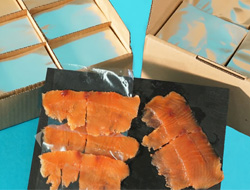Cellophane History
Cellophane™ was invented in 1908 by Jacques E. Brandenberger, a Swiss textile engineer, who first thought of the idea for a clear, protective, packaging layer in 1900.
Brandenberger was seated at a restaurant when a customer spilt wine onto the tablecloth. As the waiter replaced the cloth, Brandenberger decided that he would invent a clear flexible film that could be applied to cloth, making it waterproof.
On December 26, 1923, an agreement was executed between du Pont Cellophane Company and La Cellophane by which La Cellophane licensed du Pont Cellophane Company exclusively under its United States cellophane patents, and granted du Pont Cellophane Company the exclusive right to make and sell in North and Central America under La Cellophane's secret processes for Cellophane™ manufacture. Du Pont Cellophane Company granted to La Cellophane exclusive rights for the rest of the world under any Cellophane™ patents or processes du Pont Cellophane Company might develop.
An important factor in the growth of Cellophane™ production and sales was the perfection of moistureproof Cellophane™, a superior product of du Pont research and patented by that company through a 1927 application.
In the manufacturing process, an alkaline solution of cellulose fibers (usually wood or cotton) known as viscose is extruded through a narrow slit into an acid bath. The acid regenerates the cellulose, forming a film. Further treatment, such as washing and bleaching, yields Cellophane™.
.jpg)
.jpg)

.jpg)
(1).jpg)













